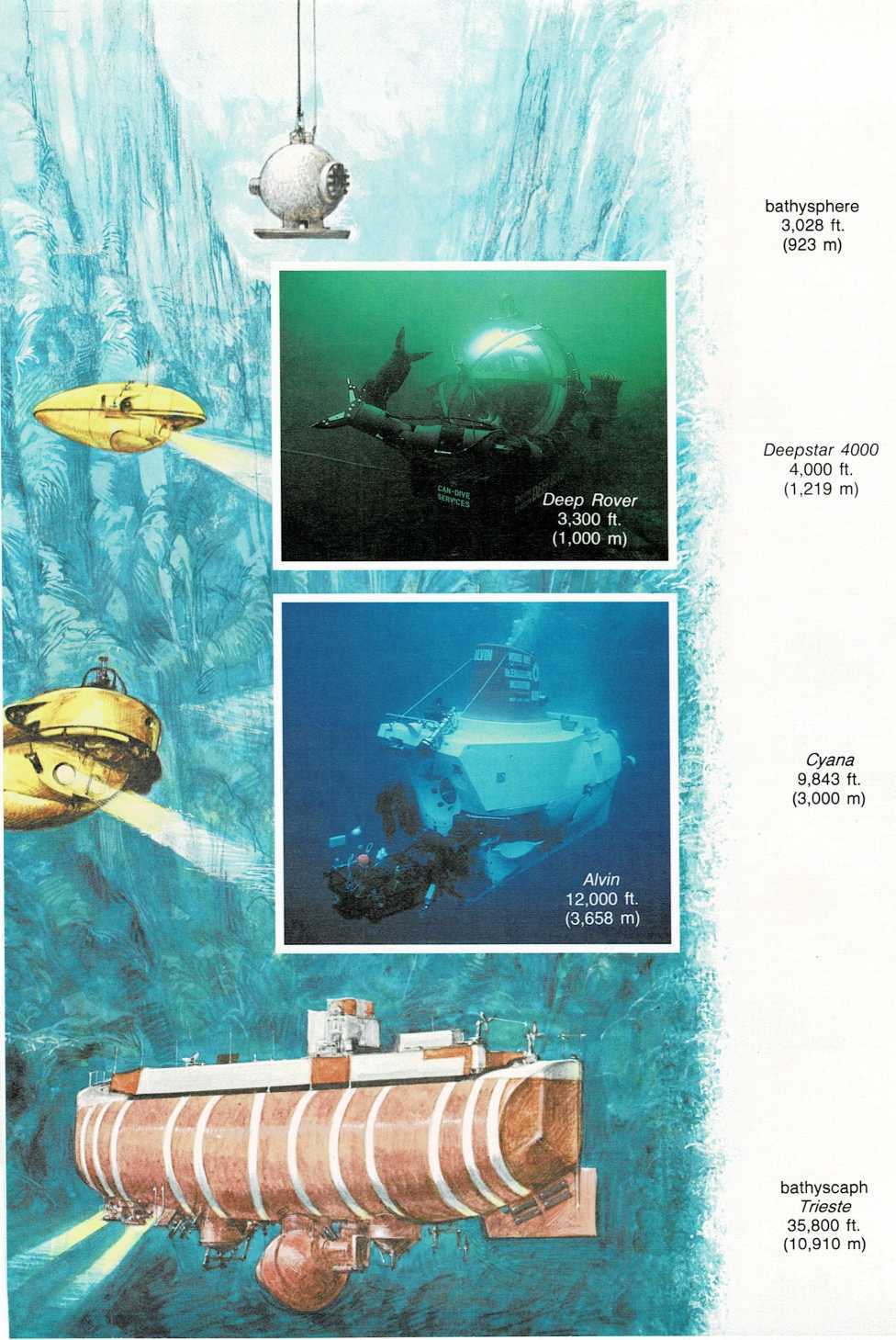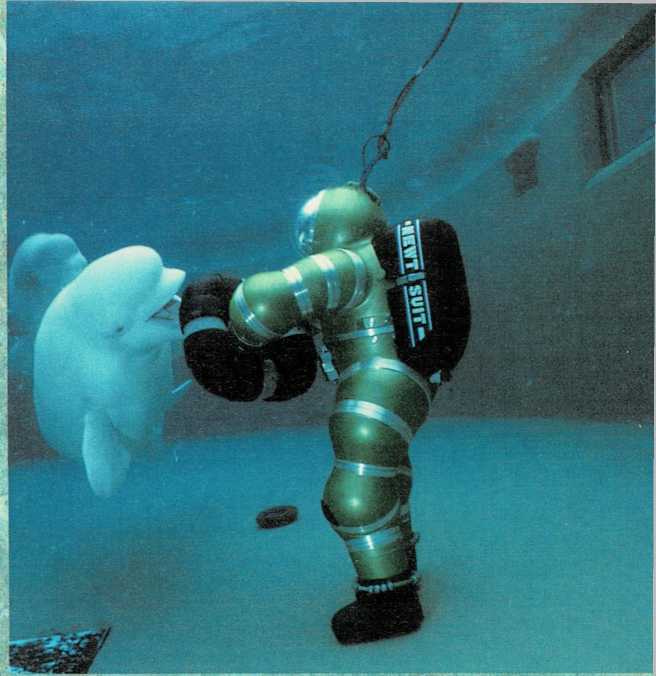Exploring the depths
A slender, baldheaded man with a bushy moustache sat inside a hollow,
metal ball. He peered excitedly through a round window. The man was
Professor William Beebe. Next to him was Otis Barton, the man who had
designed the metal ball. The two men were 2,200 feet (660 meters)
beneath the surface of the sea—deeper than anyone had ever gone
before.
The metal ball was a bit like a weight on the end of a fishing line. It
hung from a thick metal cable attached to a ship, above. The ball, which
was barely big enough for Beebe and Barton to sit in, had been given the
name bathysphere [(bath]{.smallcaps} uh sfihr), meaning \”depth ball.”
Its metal walls were an inch and a half (4 centimeters) thick. Two tanks
of oxygen provided enough air for eight hours.
The water was pitch-black, for light cannot penetrate so far down into
the sea. But the ball was equipped with a searchlight that lit up the
water for a short distance. And .in the beam of light, Beebe could see
many strange creatures that no one had ever seen before.
He saw two big fish whose bodies were outlined by rows of pale blue,
glowing lights. There were small fish with orange lights on their heads,
bluish-white bodies, and long fangs in their upper jaws.
These pictures show six kinds of underwater diving craft— called
submersibles—and the depths to which they go.
It might seem easy to go deep down into the sea. But it’s not. The
deeper you go into the sea, the more water there is above you. Water has
weight that presses against you. And the deeper you go, the greater the
pressure. Even a thick-walled container made of sturdy metal

A diver in a Newtsuit can work underwater at depths up to 1,000 feet
(300 meters). The suit is aluminum, and the joints turn instead of
bending. This diver is testing the suit in an aquarium tank.

could, if it went too deep, be crushed by the weight of all the water
pressing on it.
It took a lot of courage for the two men to let themselves be lowered to
the depth they had reached. If the cable should break, they were doomed!
The bathysphere would sink until the pressure of the water crushed it
like an egg. But Barton, an engineer, was sure of the safety of his
machine. And Beebe was a scientist, willing to risk his life for
knowledge.
Beebe and Barton made their deepest dives in 1932. They were the first
to brave such depths. We gained a great deal of knowledge of deep-sea
life from the careful notes that Beebe made about the things he saw.
Since that time, other men, in other kinds of vessels, have gone far
deeper. They have added to our knowledge of the undersea world.
A Swiss scientist, Auguste Piccard, invented
a deep-sea diving ship called a bathyscaph [(bath]{.smallcaps} uh skaf),
a name that means \”deep ship.” The bathyscaph does not have to be
lowered on a cable as the bathysphere was. It can move up and down by
itself.
In 1960, Piccard’s son Jacques and Don Walsh, an American naval officer,
took the bathyscaph Trieste down 35,800 feet (10,910 meters) into the
Pacific Ocean. This dive of nearly seven miles (11 kilometers) is the
deepest ever made.
Once a bathyscaph is down, it cannot move forward or backward very
easily. But another kind of deep-sea ship, called a submersible, moves
very well underwater. As yet, however, submersibles can go down only
about twelve thousand feet (3,658 meters).
Some deep-sea exploring is done in specially built submersibles. In
1977, scientists in such a submersible explored parts of a great crack
that lies two miles (3.2 kilometers) down on the rocky floor of the
Pacific Ocean. This crack, or rift, is a place where melted rock from
deep inside the earth oozes up onto the ocean floor.
Down in these cold, black depths, the explorers made an amazing
discovery. Usually, there aren’t many animals at such depths. But there
were animals there—lots of them. Through cracks in the sea bottom,
warm water spurted up. And in these patches of warm water, like islands
in the cold, lived animals seldom seen so deep.
The deep sea is like a new world, almost as strange as another planet.
And we are really only beginning to explore it. It is full of mysteries,
new discoveries, and exciting things to learn!

